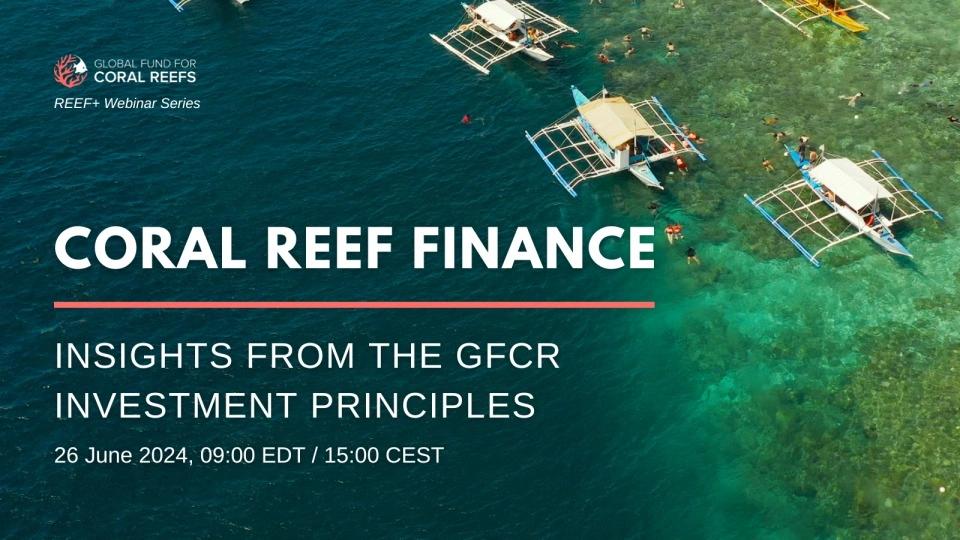Insights into the GFCR Investment Principles Webinar

What does it mean to build a “reef-positive” business or finance strategy?
In this REEF+ Community of Practice webinar, "Coral Reef Finance: Insights from the GFCR Investment Principles," the Global Fund for Coral Reefs (GFCR) community explored the ten investment principles that guide GFCR’s work.
The session featured discussions on how diverse considerations, from scalability and replication to community empowerment, can guide decision-making to foster reef-positive investment.
The session also marked the launch of "Coral Reef Finance: Insights from the GFCR Investment Principles," a new guidance document on the ten principles, featuring case studies from GFCR programmes and initiatives across the globe.
Watch and download resources from the session:
Webinar recording:
Download the principles:
https://cdn.sanity.io/files/bcil16f4/production/8fc05112dfe7c03d88bcaceaaa27bc4c79b518d0.pdf
Speakers included:
- David Meyers, Senior Technical Advisor, GFCR
- Antonio Gutierrez, Transactional Services Manager, MAR+ Invest, New Ventures
- Angelique Brathwaite, Director of Conservation & Science, Co-Founder, Blue Alliance
- Jan Yoshioka, Vice President, Sustainable Finance, Asia-Pacific, Conservation International
- Torsten Thiele, Blue Finance Senior Advisor, ORRAA
Responses to audience questions:
Q: A comprehensive Socio-Ecological-Economic approach requires a transdisciplinary approach. What is GFCR doing to support such strategies?
A: Many GFCR Convening Agents integrate a transdisciplinary approach by engaging communities, scientists, business actors, and policymakers. GFCR strives to use systems thinking as a principle and practice.
Q: Are there examples of increased public/private finance in blended finance?
A: Blue Alliance – Marine Protected Areas employs a blended finance approach that includes philanthropy, bilateral donors, and private investment. Another example is TNC and Pew’s work with debt conversions.
Q: I am developing an initiative integrating sea cucumber, seaweed, and coral reef conservation in marine protected areas in Indonesia. Are there investment opportunities, and what are the application requirements?
A: Please contact andrew.rylance@undp.org to be connected with the GFCR Convening Agent in Indonesia for further discussions.
Q: I am building a biodiversity-linked microfinance facility for diving instructors in the Red Sea. The interest rate would change based on participation in an ecosystem reporting program. What advice do you have?
A: Please contact andrew.rylance@undp.org to be connected with the GFCR Convening Agent in Egypt for further discussions.
Q: GFCR is a great initiative, but how can smaller NGOs benefit from it?
A: Technical Assistance Facilities and incubators can be a first step. Exploring existing finance sources and directing them towards reef-positive enterprises is also key. If there are opportunities for revenue generation, a business plan is often necessary for blended finance instruments.
Q: How does GFCR handle investments in innovative pilot projects with uncertain scalability and replication?
A: While certainty is never guaranteed in first-time projects, replication and scalability must be part of the pilot design. Strong scientific backing through literature reviews and expert agreement, coupled with a solid financial model, are essential for investment consideration.